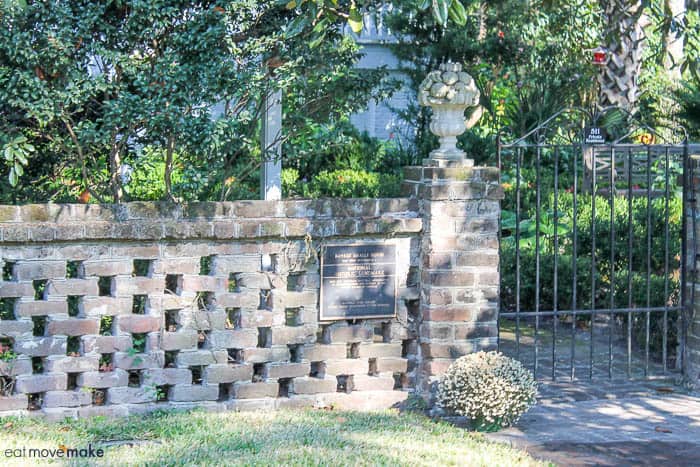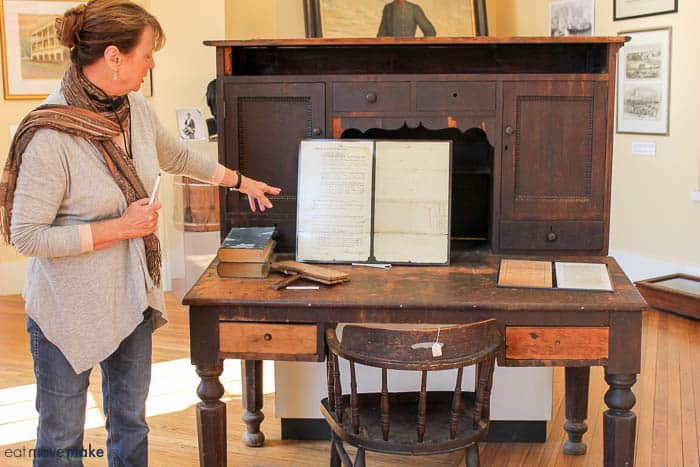Nestled in the heart of Beaufort, South Carolina lies a charming historic district that’s a feast for the eyes and the senses. The Beaufort Historic District, with its tree-lined streets and picturesque pre-Civil War homes, is a window into the rich history and culture of the area.
But what is it about this particular neighborhood that sets it apart from other historic districts in the country? Well, for starters, it’s listed on the National Register of Historic Places, a testament to its architectural and cultural significance.
Whether you’re a history buff or simply looking for a delightful stroll, the Beaufort Historic District is a must-see destination that will leave you enchanted and inspired, so let’s dive in and explore it.

Touring the Beaufort Historic District
The historic district neighborhoods are a must-see. To ensure you hit all the highlights, consider taking a guided tour— on foot, by carriage, or even on a golf cart.
Many of the stunning homes along Bay Street and Craven Street in ‘The Point’ neighborhood are surrounded by palm trees and lie underneath canopies of live oaks dripping with Spanish moss.
Secession House

Once owned by Edmund Rhett, this home was used as a secession meeting place. Because it’s a private home, I can’t verify this, but we were told on our Southurn Rose Buggy Tour that Rhett and his supporters wrote messages on the basement walls in their blood. When the Union took over Beaufort, they wrote their own bloody messages on the walls in return. (I have one eyebrow raised about it, but it’s an interesting story.)
Parish Church of St. Helena

One of the oldest active churches in the country, it was founded in 1712 and was attended by many of Beaufort’s most prominent and wealthy citizens. The cemetery is home to “Tuscarora Jack,” two British officers who were killed in the battle of Port Royal at Gray’s Hill, and two Confederate generals.

During the Civil War, the church was turned into a hospital, and supposedly tombstones were used as operating tables. Our tour guide told us there are two tombstones side by side in the cemetery that bear the marks of those early surgeries. (Insert another eyebrow raise here, but… it’s a fun story.)

Robert Smalls House

Robert Smalls was born into slavery, and worked in this home for most of his enslaved years until being sent to work on the CSS Planter. He learned everything he could about commandeering the ship, and on May 13, 1862, in an act of incredible heroism, he sailed the ship to freedom and turned it over to the Union forces, freeing himself and his crew and their families from slavery. After the war, he bought his former master’s home in Beaufort.
Tabernacle Baptist Church

This beautiful church watches over the resting place of Robert Smalls and his wife.
First African Baptist Church

This was built after the Civil War by freed slaves who purchased the land and built the church together.
Anchorage 1770

This absolutely stunning and completely renovated 18th century Victorian was built of tabby, and is now a luxury B&B with excellent cuisine. Look for the glassed-in but exposed tabby wall inside the inn, and ask about the hidden rum bottle cubbies.

Beaufort Arsenal and Beaufort History Museum

If you’re wandering around the Beaufort historic district, you can’t miss the goliath yellow tabby and brick Arsenal building in the midst of all the elegant homes. Take a few minutes and go into the courtyard, where you’ll find two historic British cannons that were captured and seized by Union soldiers.

The Beaufort History Museum is housed inside the Arsenal building, and for a modest admission fee, a docent will take you through Beaufort’s history as you view the exhibits. However, you’re welcome to browse on your own.

Explore the Gullah culture at Penn Center

St. Helena Island is home to the Penn Center, site of the former Penn School. When the plantation owners fled the island after the Civil War, the freed Gullah Geechee people remained, and the Port Royal experiment was designed to teach them to support themselves. Not only were students educated in the traditional sense, but they were taught valuable skills in farming and homemaking, health and money management.
The Gullah people continue to survive and thrive to this day, and in large part we can thank the Penn Center for all it has done and continues to do to promote education, historic preservation and social justice for African Americans.

Later, the Penn Center served as a safe and secret meeting place for Dr. Martin Luther King, Jr. and his associates as they tirelessly fought for Civil Rights. This is where it’s thought he penned his famous “I Have a Dream” speech.
Sample Gullah cuisine

If you can stop by Gullah Grub on your way to or from the Penn Center, you can taste authentic Lowcountry Gullah cuisine.


Leave A Reply!